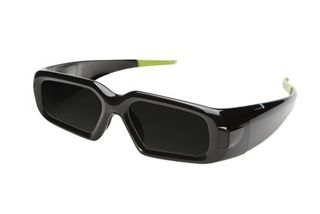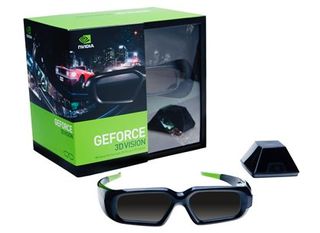Gaming with Nvidia 3D Vision
Your games never looked this good. But is it worth it?

Above: An image that ran with a press release from IMAX about how much money they made by partnering with Warner Bros. in 2008
But 3D technology isn’t going the way of the dinosaur anytime soon. 3D films have crept back into the mainstream - and according to our own David Houghton, 3D gaming might be the next hot standard since high definition televisions and Blu-ray.
But what about the cost? Will it work with your games? What about the eyestrain? How silly will we look? And most importantly, is it worth it? From what we’ve seen, the Nvidia 3D Vision kit is the most highly reviewed and popular 3D solution for gaming to date, boasting an impressive list of supported titles. So we decided to check out the best-of-the-best, and find out how good 3D gaming really is.

Above: Nvidia’s 3D Vision slick shades are a far cry from its kitschy cardboard predecessors of yesteryear. But is it worth it?
The 3D Vision kit uses stereoscopic 3D technology. It creates the illusion of depth by splitting each screenshot you see into two slightly different images and delivering each one to the appropriate eye. It’s sort of like playing a practical joke on your brain by tricking it into thinking that you’re seeing two separate images as one.

Above: This is an example of an image meant for your left eye

Above: This is the image for your right eye
Sign up to the 12DOVE Newsletter
Weekly digests, tales from the communities you love, and more

Above: Without the glasses, both images overlap and looks something like this
Each lens in the wireless glasses included in the 3D Vision kit is actually a tiny LCD screen. When your monitor tosses you a frame from the game you’re playing, one lens lets the image through to one eye, and the other darkens to filter it out. When the next frame appears, the amount of voltage running to the LCD lens changes so that the corresponding image is now delivered to your other eye. How fast does this happen? About 60 times per second. The amount of voltage running through the glasses is synched to your monitor’s refresh rate, and happens so quickly that your eyes can’t detect the transition.
- Wireless glasses
- IR emitter
- DVI-to-HDMI cable
- Two USB cables
- VESA 3-pin Stereo Cable
- Interchangeable nosepieces
- A cleaning pouch and cloth for your fancy new glasses
Total cost: $199
The wireless glasses and IR emitter
The wireless glasses are surprisingly comfortable and fit snugly over a pair of prescription glasses. When fully charged, it can last for approximately 40 hours. It also has a sleep mode and shuts itself down when not in use to conserve battery power. After gaming on and off for a few hours at a time over a few weeks, we didn’t have to recharge our glasses once. Plus, it’s not terribly uncomfortable to wear the glasses with the USB cord plugged in to let it charge as you play.
We were also concerned about eyestrain. When you first load up a game, expect to feel a bit of strain as your eyes adjust. Text and menus can be a difficult to read, and sometimes you can see a hint of the second image overlapping with the first, creating a ghosting effect. But once you adjust the depth via the handy scroll wheel on the back of the IR emitter and the distance between you and your monitor, gaming with your 3D glasses on feels quite comfortable. In fact, we experienced very little eyestrain during two-to-three hour gaming sessions. It’s when you take the glasses off that you’ll feel a little disoriented, kind of like when the lights come on after you’ve been watching a movie at the theater.

Above: The extra nosepieces are appreciated. But for the hefty price tag, you’d think they’d include a nice case for your 3D glasses

Above: Next up: what it’s like to play games… in 3D!
Most Popular


